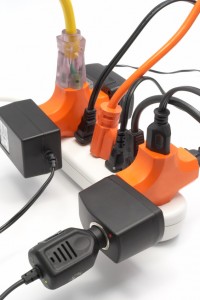This is a test.
This is a test
July 9th, 2015This is a test
July 8th, 2015This is a test
This is a test
July 7th, 2015This is a test.
This is a test
July 6th, 2015This is a test.
This is a test
July 5th, 2015This is a test.
Happy Fourth of July!
July 4th, 2015This is a test
July 3rd, 2015This is a test.
Protect Your Mobile Devices With a UPS
July 2nd, 2015For many, the summer months bring increased risk of power outages or power surges as peak air conditioning use strains aging utility grids. Protect your sensitive computer equipment and data with an uninterruptible power supply (UPS). The UPS is an appliance that contains a battery that will continue to power your computer when it senses a loss of electricity from the primary source. If you are using the computer when the UPS chirps to announce power loss, you have time to save any files you are working on and have an orderly shutdown of the computer. In addition to protecting against data loss, a UPS can prevent a power surge from damaging your computer. Always use a UPS when you are relying on a back-up generator for power as the flow of current from the generator may not be entirely smooth.
The UPS appliance I have in my home office provides up to two hours of additional powered operating time. It has eight outlets: four for battery back-up and four that offer surge protection only. So, of course, I have my computer connected to the battery back-up outlets and use the surge protection outlets for my printer, scanner and other devices to protect them without consuming battery capacity. My UPS appliance also comes with a $150,000 equipment protection policy, so if my equipment is damaged from the power supply, my losses are covered. In order to ensure that the coverage remains in force, it is critical to have the equipment connected to the proper outlets on the appliance (i.e., the computer must be connected to the battery back-up outlet).
So in the event of power loss, I have two additional hours of work time from the UPS battery before I power down my computer and pick up my work on the laptop and tablet, which I keep fully charged at all times. And now, with increased use of mobile devices, it is important to protect the tablets and laptops as well, so I charge them through my UPS appliance to protect against damage from the power supply. In my community, we often have micro-outages between one and three o’clock in the morning – you learn of them when the clock on the over flashes “12:00 a.m.” the next morning. With the UPS appliance, I am not leaving anything to chance.
Preparing for the Holiday Fireworks
July 1st, 2015In anticipation of the Fourth of July holiday, people in our neighborhood are testing their firecrackers and causing fear and anxiety in one of my two canine office mates. It will likely be even worse this weekend. And, of course, even after the holiday, loud noises that frighten some dogs, including one of mine, can be expected to continue as thunderstorms are more common during the summer months.
When we are out walking and Coco hears loud noises (airplanes overhead, firecrackers, thunder), she immediately turns around and starts pulling on her leash to lead us home, where she feels safe. Henry is fine, but Coco does not like loud noises, although she doesn’t seem to mind sirens. When she hears a noise, and her hearing is much better than mine, she prefers to be safe in her home. And once home, or in the office, she tends to be very cling-y, following me room to room and jumping into my lap when I am at my desk, attempting to type on the computer keyboard.
If you have pets in your office, you might have to prepare for some mild pet anxiety that could interfere with your work as thunderstorms happen or people celebrate the summer months with firecrackers. I have found the following approaches to be helpful:
- Keep the pets inside during fireworks or storms and stay close to them. If I have any flexibility in my schedule, I move appointments around so I can be in the office with Coco during a storm as she does become very anxious (excessive lip licking is the first sign) at that time. Make sure your ID tags and microchip information is current as, in the event a fearful dog bolts, you want to make it easier for someone to return your pet to you.
- Get your exercise before the storm – it avoids the need to go out later as the rolling thunderstorms approach and gets the dog tired, which makes the anxiety easier to manage. Ideally, I’d have Coco so tired she’d sleep right through the storm. Keep the windows and doors closed to block out as much noise as possible.
- Sometimes providing a safe place, like a comfortable pet bed or crate, or a toy can offer reassurance to a fearful dog. It doesn’t work for me, Coco loses her appetite when she is fearful, but I am told treats reassure other nervous dogs. Thundershirts, which are like compression garments for dogs, can also help.
- Go about your day as you normally would. If you appear anxious, your dog will pick up on that and her anxiety will be even worse. To that end, I always make sure I do my grocery shopping in advance of a storm forecast. Because I get anxious about being out on the road when there is a thunderstorm.
This is a test
June 30th, 2015This is a test.


